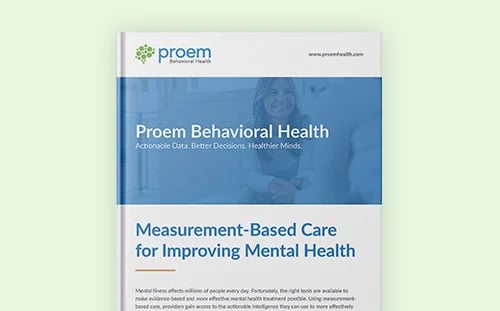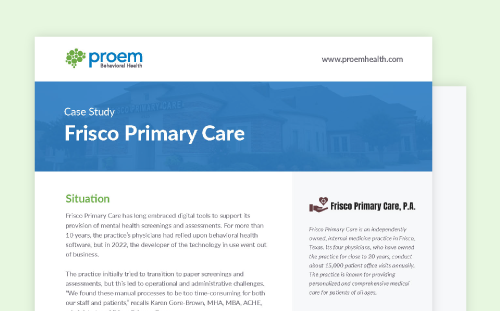.jpg?width=625&name=nView%20Blog%20Header%20(1).jpg)
In February 1981, R. Penchansky and J. W. Thomas co-authored a publication titled “The concept of access: definition and relationship to consumer satisfaction.” The document was an attempt to describe the “fit” between a patient and the healthcare system using specific dimensions. As health equity remains one of the most important challenges of our healthcare system today, I wanted to share this definition in an end-of-year “report card” on mental healthcare.
Penchansky and Thomas listed the five “A’s” below to define the patient-provider fit:
- Affordability: A provider’s charges and the client’s ability to pay.
- Availability: Does the provider have the requisite resources to meet client needs
- Accessibility: Client’s geographic and physical ability to reach a provider.
- Accommodation: Manner in which provider’s operation meets the client preferences.
- Acceptability: The client’s comfort with the provider including age, sex, social class, ethnicity.
Although written 40 years ago, these factors are still very much in play when assessing the state of our nation’s mental healthcare. As a self-assigned, biased, and statistical sample of one, I will nevertheless play Examiner and grade the nation’s performance in 2021.
Affordability .png?width=50&name=Untitled%20design%20(11).png)
While the mental health world has been flooded with inexpensive digital mental health applications over the past 24 months, these apps primarily address the population suffering from mild to moderate mental health problems. This is mostly good and has helped many people. However, a large and fundamental gap still exists between our nation’s healthcare and mental healthcare systems. We haven’t institutionally connected the dots that clearly demonstrate that mental healthcare IS healthcare, and as a result, reimbursement and insurance coverage continue to lag for mental health services that are needed for more complex conditions.
Availability .png?width=50&name=Untitled%20design%20(11).png)
One of the very few silver linings of the pandemic has been the broad acceptance of telehealth in healthcare, and perhaps nowhere has that been more effective than in the field of behavioral health. Unfortunately, it is not enough, nor will it be enough anytime soon. A recent SAMSHA report listed a total of 700,000 trained mental health professionals in our country today trying to address the needs of a population that requires 5.1 million mental health professionals — a staggering deficit. Worse, our children, adolescents, minority and rural populations have and continue to be the most vulnerable to availability issues, bearing the brunt of the pandemic’s mental health burden.
Accessibility .png?width=50&name=Untitled%20design%20(12).png)
I give accessibility a passing score simply because technology and teletherapy have helped reduce the number of in-person visits required for someone seeking mental healthcare. Virtually every therapist in the country has been able to effectively serve many of their clients with remote audio or video sessions.
Accommodation .png?width=50&name=Untitled%20design%20(11).png)
The simple fact is our nation’s primary care system has evolved to be the mental health backstop for the acute shortage of trained mental healthcare professionals. Treating mental healthcare is not something they were trained to do in medical school, yet they are who most patients turn to for mental health treatment. In fact, primary care professionals in our country prescribe roughly 80% of the psychotropic drugs used to treat mental health disorders. Worse, they are forced to rely on old, embedded, one-dimensional screening tools to assist their lack of proper psychiatric training, resulting in diagnoses that are incorrect far more than they are correct. To put it in perspective, imagine trying to correctly diagnose a patient’s physical ailment from a blood test that only provided a glucose level. Our providers need much better tools to identify, help diagnose and monitor patient outcomes. That is nView’s “raison d’être.”
Acceptability .png?width=50&name=Untitled%20design%20(11).png)
This is at the core of our nation’s health equity discussion and requires substantive and thoughtful changes across our healthcare system including mental healthcare. A great deal of national attention continues to be directed toward the importance of social determinants of health and study of population health, but there is so much more that needs to be done. Health equity is perhaps the long pole in the tent that needs to be set…
 Meet the author ...
Meet the author ...
Jim Szyperski, CEO of nView Health
Jim Szyperski is an experienced leader of high-growth technology companies and has served as the Chief Executive Officer of companies in energy management, financial services, and telecommunications prior to his role at nView. At nView, Jim is responsible for overseeing the strategic direction of the company and an incredible team of leaders who are building the digital future of behavioral health. Jim is a graduate of the University of North Carolina and lives in Atlanta with his wife and family.












